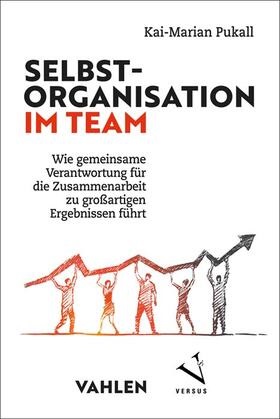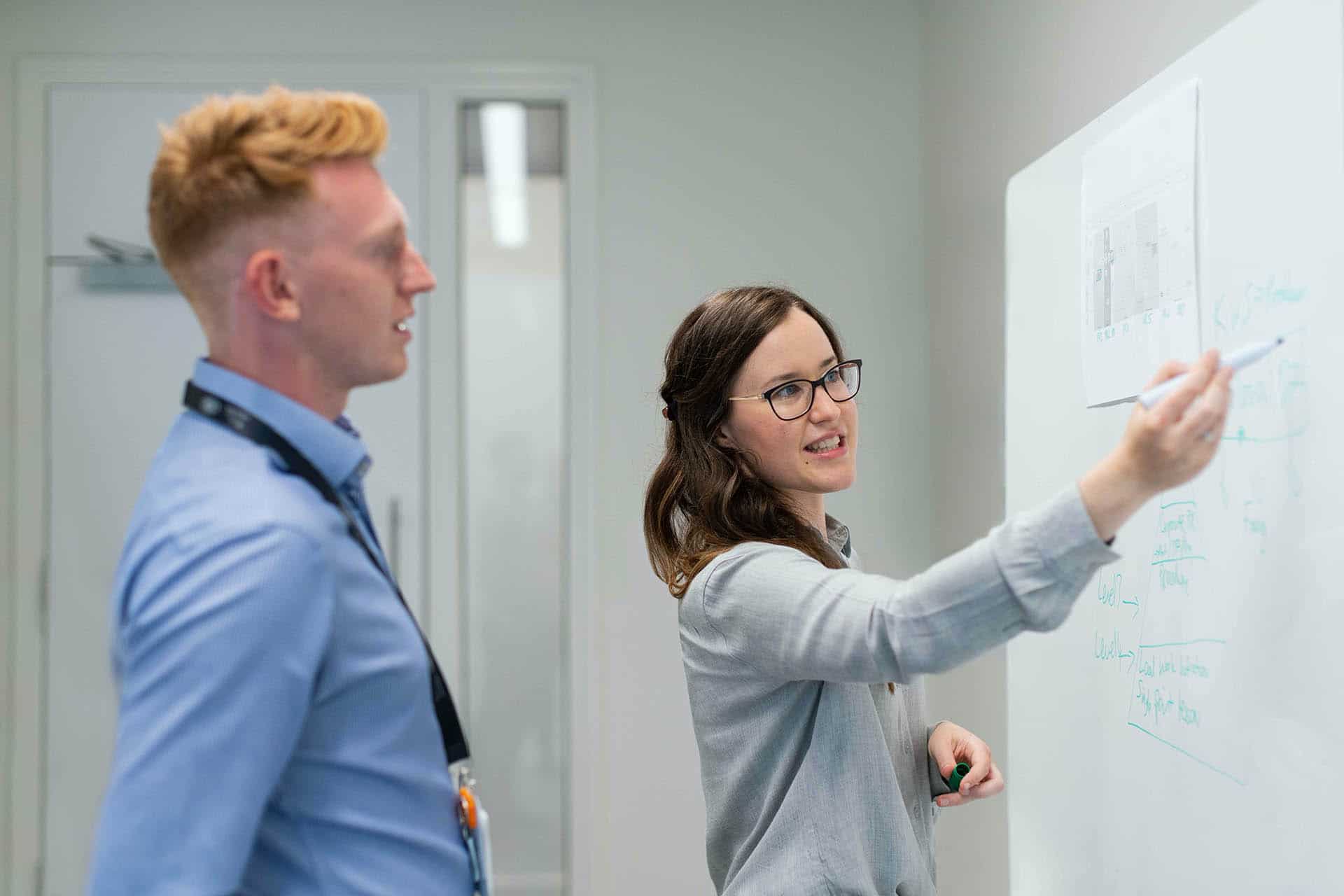What parameters does self-organisation need?
Let’s be honest: most of us would like to work in an environment in which there is at least some degree of self-organisation and personal responsibility.
I have yet to meet anyone for whom “good collaboration” means a group of passive recipients of orders who are micromanaged by a clichéd “boss”. For most people, good collaboration means committed, constructive cooperation in which people take responsibility, tackle problems proactively and regularly review and adapt working structures. Even if everyday organisational life may not always correspond to this ideal, at least the necessary will is not lacking.
On the other hand, self-organisation – the (co-)design of rules and processes by the people involved themselves – is often perceived as risky and the potential benefits are doubted compared to the risks of failure. Some turn it into a question of character: participation is a nice ideal, but in practice it is only possible with the “right” people. The implication is that you obviously have the “wrong” people at your disposal, even if this is rarely stated so clearly.
Time for a quick fact check: people have been living together in self-organised communities for thousands of years – again, “self-organised” here means that a group defines its internal norms and processes collectively. I myself have been working for years in and with teams that do exactly that every day and are very successful. It is undisputed that self-organisation as a concept can work in principle. At the same time, we all know from our own experience that a group left to its own devices is not necessarily successful. Co-operation can fail in many ways: escalating interpersonal conflicts, egoistic assertion of individual interests, refusal to take responsibility, social disintegration of the group into lone warriors, permanent disagreement about goals and priorities, delayed decisions, and so on. After such experiences, it is understandable to conclude that none of this would have happened with a clear leader and fixed rules. At the same time, of course, these problems are nothing new.
Self-organisation and the commons problem
The biologist Garrett Hardin drew a devastating conclusion as early as 1968 in his famous essay on the “Tragedy of the Commons “1 : unclear responsibilities and a lack of consequences in a self-governing community led to everyone pursuing only their own interests, which inevitably led to the collapse of shared resources. The fact that Hardin writes about the (now presumably solved) problem of global overpopulation2 (and proposes, among other things, Chinese-style state birth control as an answer) has not prevented economics from explaining his specific statements on general market principles. I myself learned in economics lectures that there were only two ways out of the commons problem: consistent privatisation or strict state control. With any other form of collective responsibility, one would have to expect that selfish individual interests would exploit the common good to the point of collapse.
In fact, phenomena such as social loafing and a self-service mentality can be observed regularly not only on the free market, but also in organisations. In view of such risks, it is understandable that people prefer to leave important decisions in an organisation to a central manager (“single wringable neck”). Many issues are too sensitive to be left in the hands of an unstructured group at random. Unfortunately, the price of centralised decisions is often lethargy and lack of interest among the other participants, who feel controlled and pressured and not really taken seriously as competent professionals.
The core problem with the fatalistic commons theory, however, is that it cannot explain a lot of real data and experiences. There are countless examples of groups and communities that manage themselves very successfully and derive high levels of commitment and strong shared identity from this. We have all experienced teams that have successfully achieved their goals without the constant supervision of a leader. It is unlikely that all these groups are made up of exceptionally altruistic superhumans. Rather, a significant difference lies in the framework conditions and structures: under certain conditions, self-organisation works well, under other conditions it fails.
Design principles for self-organised structures
These conditions for self-organisation can be created if you know what is important. A pioneer in this field was the American political scientist Dr Elinor Ostrom, who was awarded the Nobel Prize in Economics3 in 2009 for her research into self-organised structures. In her many years of work, she identified eight central design principles4 that make the success of self-managed structures more likely and which, in my experience, are of critical importance when working with agile and self-organised teams. Here they are in a slightly adapted form for teams and organisations:
1. clearly delineated membership
A group can only establish binding rules and procedures if it is clear who belongs and who does not. Anonymity or constantly changing members make it impossible to establish expectations and sanction rule violations. Successful self-organised teams are stable, people know each other and remind each other of the rules when demanded. Voluntary membership promotes these processes: Joining a team of your own free will creates the necessary willingness to abide by the rules that apply there.
2. locally adapted rules and structures
Social acceptance of rules and structures is absolutely crucial, especially when there is no central “ruler”. To achieve this, they must be seen by local people as helpful, not obstructive or nonsensical. Working environments differ greatly from one another, which is why processes and standards must always be able to be adapted to local conditions to some extent. Centrally defined rules may promise cost efficiency – but if you want to promote commitment, you should be able to tolerate a certain degree of diversity in the organisation. This does not mean that everyone can do what they want – the fact that rules can be adapted locally does not make them any less binding.
3. decisions made together
People are happy to adhere to guidelines if they personally consider them to be sensible. Being able to help shape them and adapt them to their own work context is therefore an important ritual that we are familiar with from agile organisations in the form of retrospectives or governance meetings. Although collaborative decisions often require a little more time and good methodology, they generate the necessary “buy-in” to be able to implement them successfully. In practice, a balance needs to be struck here: Discussing every detailed decision with the entire team would be tedious and lengthy, while at the same time decisions by individuals must not cast doubt on the group’s shared responsibility. Consultation-based decision-making methods5 have proven to be particularly effective in practice.
4. high ongoing transparency
Successful self-organised teams are not based on naïve trust, but on transparency, mutual responsibility and high reliability. Rules are of little value if group members cannot check that they are being adhered to. Teams therefore need an ongoing overview of the current work status, incoming and outgoing information and resources as well as the decisions and actions of their members. This includes a wide range of measures, from the use of shared task boards, the establishment of “information marketplaces” and regular check-ins to the seamless tracking of budgets or a team cash register.
5. appropriate sanctions for misconduct
Rules that have no consequences if they are ignored remain ineffective. At the same time, we must recognise that people can make mistakes or simply have a bad day. Breaking the rules can be justified or even necessary in individual cases6. Successful teams therefore react in a differentiated way to possible misbehaviour – from simply addressing a rule to gentle admonishment for minor mistakes (“Next time, please do it as we agreed”) to the withdrawal of privileges or even exclusion mechanisms that can be used to remove notorious rule-breakers from the group. Often the knowledge of these sanction options alone ensures that their use is rarely really necessary.
6. easily accessible mechanisms for conflict resolution
We cannot assume that the interests and ideas of our group members will always be congruent – in fact, different perspectives and competences are expressly desired in teams. People will therefore come into conflict with each other in everyday life. In most cases, these conflicts can be resolved among themselves, but if this fails, they can escalate and jeopardise common goals. In such cases, clear dispute resolution mechanisms are needed. A number of options are conceivable here, from group votes to neutral mediation offers to a decision by a higher authority. Above all, it is important that these options are known and easily accessible at all times, and that there are clear expectations within the team to seek a constructive solution to differences of opinion themselves: “It’s okay to disagree, but not to argue about it for weeks on end.”
7. respecting the right to self-management
Self-organised teams do not operate in a vacuum, but are usually embedded in a larger, often hierarchically organised context. In order for the team to be able to organise its area of responsibility freely and easily, it needs clear agreements on the boundaries of this area of responsibility and credible assurances that the environment will respect the team’s decisions.7 If team decisions are arbitrarily disregarded or overruled from outside, the interest in getting involved in shaping the area is quickly lost.
8. good integration into larger structures
In addition to contact points in a hierarchy, most teams have other dependencies, for example with other teams or parts of the organisation. The team should also define and work on these interfaces itself and integrate itself proactively into larger co-operation networks in which issues of strategic importance are clarified. The environment can provide support where necessary.
Final thoughts
If we compile the most important principles for successful self-organisation in teams, we arrive at a list like the following:
- Permanent members with stable relationships
- Voluntary membership based on clear agreements
- Clear but realistic performance expectations for jointly defined goals
- Explicitly agreed, locally customised rules and procedures
- Regular review and adjustment of structures by the group itself
- Focussed and efficient decision-making, including the avoidance of consensus-seeking (“disagree and commit”)
- High internal transparency
- Differentiated sanction options by the group
- Easily accessible mechanisms for dealing with and resolving conflicts
- Self-governance explicitly respected by the environment, including clearly defined areas of responsibility for the team
- Close networking with other teams and stakeholders in the organisation
It is clear that successful self-organisation in teams has little to do with chaotic “free for all” and all the more to do with commitment, balancing of interests and mutual discipline. The key to this is that group members accept this social control and recognise it as valuable and necessary. Only at first glance does this decision sound like a surrender of personal freedoms. Hardin himself writes:
“What does ‘freedom’ mean? When people agreed to legislate against predation, humanity became freer, not less free. Individuals trapped in the logic of the commons are only free to bring about general ruin; once they recognise the necessity of mutual coercion, they become free to pursue other ends.”8
At the same time, it is obvious how different such a team is from a group that has been left to its own devices in cheerful naivety, trusting that group dynamic processes will somehow generate solutions. Working in successful self-organised teams can be challenging and exhausting, but it can also generate concrete added value – for everyone involved.
Notes:
If you like this article or would like to discuss it, please feel free to share it in your network.
[1] Hardin, Garrett (1968). The tragedy of the commons. Science 162.
[2] How Did The World Population Change?
[3] The correct name of the award is the “Alfred Nobel Memorial Prize in Economic Sciences”.
[4] Ostrom, Elinor (1990). Governing the Commons. Cambridge University Press.
[5] For example, see Oestereich, Bernd & Schröder, Claudia (2017). The collegially managed company. Vahlen, p.186ff.
[6] See e.g. Kühl, Stefan (2020). Useful illegality: The benefits of breaking the rules in organisations. campus.
[7] My colleague Leonie Heiß has already presented a tool for these agreements here: How does a radically self-organised team work?
[8] See [1], p. 1248
Additional reading tips:
Brinkmann, Babette & Schattenhofer, Karl (2022): Successful teams in self-organisation. Vahlen.
Helfrich, Silke & Bollier, David (2015). The world of the commons. transcript.
Kai-Marian Pukall has been working with agile and self-organised teams for over twelve years. For three years, he accompanied one of the largest transformations in the German-speaking world as an Agile Coaches at DB Systel. He is currently a senior consultant for Chili and Change, advising clients throughout Germany on how to improve their collaboration. His work focuses on the realisation that particularly successful teams are often characterised by aspects such as voluntary membership, a high level of commitment and clear internal structures. His book Selbstorganisation im Team is about how to achieve this state as a team. Well worth reading!
Kai-Marian Pukall has published more articles in the t2informatik Blog:

Kai-Marian Pukall
Kai-Marian Pukall works as an organisational consultant for Seibert Media GmbH. He has been accompanying agile teams for many years, always with the aim of making collaboration valuable and professional, simple and people-friendly. He prefers to apply the Lean principle “Eliminate Waste” to everything that smells like method and business theatre.



